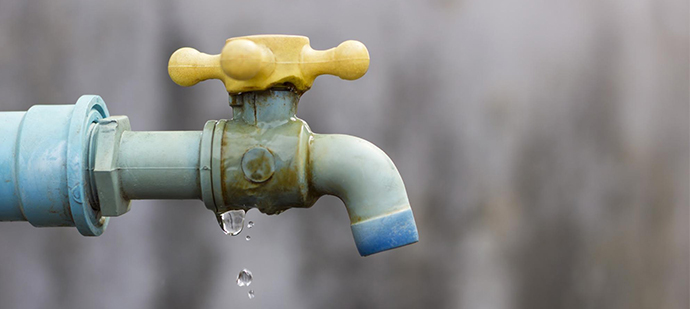How to Examine If Your Residence Has a Surprise Leakage
How to Examine If Your Residence Has a Surprise Leakage
Blog Article
The content following next relating to Hacks to detect leaks is definitely interesting. Give it a go and make your own personal final thoughts.

Early discovery of leaking water lines can minimize a prospective calamity. Some small water leakages may not be noticeable.
1. Analyze the Water Meter
Every residence has a water meter. Checking it is a guaranteed way that helps you find leakages. For starters, shut off all the water sources. Make sure no person will flush, make use of the faucet, shower, run the washing maker or dishwasher. From there, most likely to the meter and watch if it will transform. Since nobody is utilizing it, there should be no movements. If it relocates, that shows a fast-moving leakage. Also, if you find no changes, wait a hr or two and inspect back once again. This means you might have a slow-moving leakage that could even be underground.
2. Inspect Water Intake
If you detect abrupt modifications, in spite of your consumption being the same, it suggests that you have leakages in your plumbing system. An unexpected spike in your bill indicates a fast-moving leakage.
On the other hand, a constant rise on a monthly basis, despite the exact same habits, reveals you have a slow-moving leak that's also gradually intensifying. Call a plumber to extensively inspect your residential property, particularly if you really feel a warm location on your floor with piping below.
3. Do a Food Coloring Test
When it comes to water intake, 30% comes from toilets. If the shade somehow infiltrates your dish throughout that time without flushing, there's a leak in between the tank as well as dish.
4. Asses Exterior Lines
Do not forget to examine your outdoor water lines as well. Examination spigots by connecting a yard hose. Must water permeate out of the connection, you have a loosened rubber gasket. Change this and make certain all connections are limited. It will assist obtain it professionally analyzed and also kept annually if you've got a lawn sprinkler system. One little leakage can waste tons of water and spike your water expense.
5. Examine the scenario and also evaluate
Home owners need to make it a habit to check under the sink counters and also inside closets for any kind of bad odor or mold and mildew development. These two red flags indicate a leak so punctual focus is called for. Doing regular assessments, even bi-annually, can save you from a major problem.
If you know your home is currently old, keep a watchful eye on your heaters, tubes, pipelines and so on. Look for stainings and compromising as a lot of devices and also pipes have a life expectancy. They will additionally naturally deteriorate as a result of tear and put on. Do not wait for it to intensify if you suspect dripping water lines in your plumbing system. Call a professional plumber immediately so you do not wind up with a horrible mess in your home.
Early discovery of dripping water lines can minimize a prospective calamity. Some little water leaks might not be visible. Inspecting it is a surefire method that helps you uncover leaks. One small leakage can waste bunches of water and surge your water costs.
If you believe leaking water lines in your plumbing system, do not wait for it to escalate.
WARNING SIGNS OF WATER LEAKAGE BEHIND THE WALL
PERSISTENT MUSTY ODORS
As water slowly drips from a leaky pipe inside the wall, flooring and sheetrock stay damp and develop an odor similar to wet cardboard. It generates a musty smell that can help you find hidden leaks.
MOLD IN UNUSUAL AREAS
Mold usually grows in wet areas like kitchens, baths and laundry rooms. If you spot the stuff on walls or baseboards in other rooms of the house, it’s a good indicator of undetected water leaks.
STAINS THAT GROW
When mold thrives around a leaky pipe, it sometimes takes hold on the inside surface of the affected wall. A growing stain on otherwise clean sheetrock is often your sign of a hidden plumbing problem.
PEELING OR BUBBLING WALLPAPER / PAINT
This clue is easy to miss in rooms that don’t get much use. When you see wallpaper separating along seams or paint bubbling or flaking off the wall, blame sheetrock that stays wet because of an undetected leak.
BUCKLED CEILINGS AND STAINED FLOORS
If ceilings or floors in bathrooms, kitchens or laundry areas develop structural problems, don’t rule out constant damp inside the walls. Wet sheetrock can affect adjacent framing, flooring and ceilings.
https://www.servicemasterbyzaba.com/blog/how-to-detect-water-leakage-in-walls/

Do you like reading about Hacks to detect leaks? Make feedback directly below. We'd be delighted to listen to your thinking about this write-up. We are looking forward to see you back again soon. So long as you enjoyed reading our blog post kindly be sure to pass it around. I value reading our article about Detecting hidden plumbing leaks.
Report this page